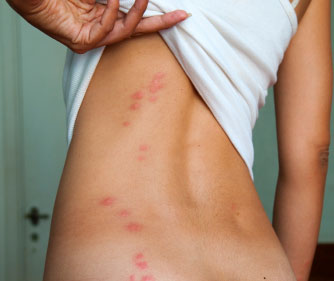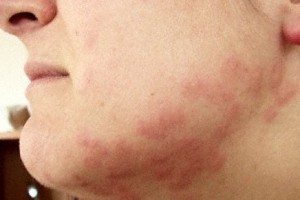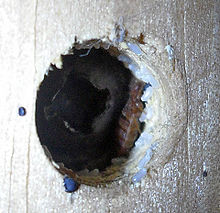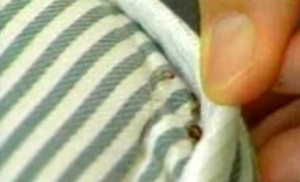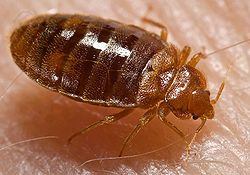Do you have a suspicious feeling that you may have unwanted bedfellows?
Have you smelled a strange sickly sweet smell in your bedroom?
Have you waken up in the morning to find strange itchy red marks on your body that look like this:
Have you noticed strange little red dots on your bed sheets or mattress?
These are some of the telltale signs of a bed bug infestation. But how do you know if you have bed bugs?
As long as you act quickly, you can stop their breeding and reduce their impact using simple solutions like in this report. Acting quickly is very important as bed bugs breed and multiply VERY quickly!
But just remember, you are not alone.
How To Tell If You Have Bed Bugs
In a few steps, I will show you how to tell if you have bed bugs, and, if you find evidence that they are indeed there, I’ll show you what you can do about it.
First off, get yourself a flashlight. It doesn’t have to be anything too fancy. It just has to be able to light up some dark corners and crevices around your bed. Bed bugs feed at night and generally don’t like bright light. They seek out dark corners when not feeding (ie. daytime). Contrary to popular belief, bed bugs can be seen by the naked eye. Fully grown adults are about the size of an apple seed.
- Remove all the sheets from your bed and inspect them for small red dots. This is blood. Your blood. This is what bed bugs feed on. They will feed on the blood of pets if nothing else is around.
- Now check all along the mattress seam flipping it up so that you can see the parts that weren’t previously exposed. Look for red dots or fecal matter or actual live bed bugs. Also check around and under the mattress buttons.
- Slide the mattress over to reveal the boxspring. Check the underside of the mattress and all along the edges of the boxspring paying close attention to any folds or crevices.
- Next check along and behind the headboard. Look closely at where 2 pieces of wood join. That could provide a space for bed bugs to hide. Also check inside any exposed screw holes.
- You can now start looking at anything around the bed, like nightstands (inside drawers, alarm clocks, picture frames, lamps/lampshades etc) and behind hanging pictures.
- Next check along the baseboard around the bed as well as electrical sockets and cracks in the walls.
- Check drapery that might be near the bed.
A good process to keep in mind is to start from the bed and work your way outward from there. Bed bugs like to be close to their food source ie. YOU!
You can also try various things to help stop their breeding frenzy and prevent them from becoming completely out of control. I would highly recommend getting a mattress encasement. You place your mattress inside one of these “bags” and zip it up. Any bugs that are already there will eventually die.
Next you should get some bed bug traps. You place these on the feet of your bed or other furniture and they will trap any bed bugs that attempt to crawl up the feet of your bed to get at you during the night.
Lastly, pillow protectors are a good idea. They are easy to put on, easy to clean and are effective.
These are all good first steps to getting rid of your bed bugs. You might want to check out a researcher named Michael Romner who recently documented his struggle with a bed bug infestation and wrote a tell-all report about how he got rid of them, with a focus on natural remedies called Bed Bugs Treatment – Secrets Revealed.
Hoping you will soon be bed bug free,
Dee
